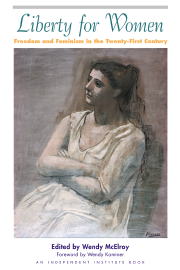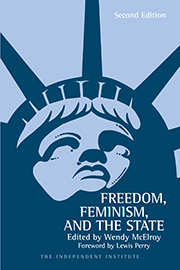“Uncle Clarence killed Grandma.”
That sentence spoken in 1998 by six-year-old Brooke Sutton initiated a seven-year nightmare for Inmate Number A375856, who was convicted of murder and child rape. The nightmare ended on Dec. 15, 2005 when the State of Ohio released Clarence Elkins and agreed to pay him more than $1 million for wrongful imprisonment.
The Ohio Dayton Daily News has been featuring a remarkable series of articles that present the Elkins’ case:
Murder, then rush to judgment; Traumatized child hid her doubts; ’My God, this thing is horrifying’; and, We can all start to heal.
The series appears at an opportune time. The ongoing ’Duke rape case’ and a string of false accusations in the headlines have sparked wide-spread debate on the rights of victims versus the rights of the accused.
The Dayton Daily News series reveals this as a false debate. Both victims and defendants suffer whenever the standards of proof required for a conviction are lowered.
In the Elkins case, Clarence along with his wife and two children suffered terribly. But a traumatized and confused child was also brutalized by authorities who did not listen to her doubts but only to what they wanted to hear. Now 14 years old, Brooke has been tortured by having caused her uncle to be imprisoned while her grandmother’s murderer walked free.
Elkins has forgiven his niece for the nightmare that began on June 6, 1998.
June 6th: Clarence’s mother-in-law Judy Johnson is at home babysitting Brooke. She falls asleep on the couch; Brooke is in the bedroom. In the wee hours, a man savagely rapes and bludgeons Judy to death. In the dark bedroom, he also beats and rapes the 51-pound child.
When Brooke recovers consciousness, the stunned child phones a neighbor to report “grandma is dead.” Then she walks to the nearby house of her best friend and tells Tonia Brasiel, the friend’s mother, “Uncle Clarence killed Grandma.”
On the same day, Brooke admits uncertainty to a friend of her grandmother and explains why she identified her uncle, “I think it sounded like him.”
The woman’s testimony later carries no weight in court because Brooke repeats to the police, to psychologists and her parents what she believes they want to hear: “Uncle Clarence killed Grandma.”
At a crime scene where the murder victim fought strenuously and two rapes occurred, the police cannot find a hair, a fingerprint or a drop of blood to implicate Elkins who has no felony record. Moreover, his wife provides an alibi that is largely supported by witnesses.
Nevertheless on June 4, 1999, Elkins receives a stiff sentence with the earliest possible parole date being 2054. People, including the jury, wish to believe Brooke and to punish someone for the unspeakable crime.
Clarence’s wife Melinda and his two sons are absolutely convinced of his innocence. For the next seven years, she works without pause to exonerate him and to provide justice for her mother. In the process, she loses her home, is hospitalized for exhaustion, breaks with family members, and steals irreplaceable time from her children.
On Nov. 10, 2001, her crusade leads Melinda to the door of the sister with whom she used to be best friends but with whom she has not spoken for years: Brooke’s mother. At her side is Martin Yant, a private investigator specializing in wrongful convictions whose work has already exonerated 10 prisoners. (In his book “Presumed Guilty,” Yant states his belief that 10,000 people in America are wrongfully convicted every year.)
The Dayton Daily News reports, “Yant can tick off a laundry list of other problems with the [Elkins] case: sloppy police work, haphazard investigation, authorities rushing to judgment, incomplete forensics.
The bloody print left on the doorjamb at Judy Johnson’s house was destroyed when police tried to lift it. Other items collected as evidence were never tested for latent prints. Judy Johnson fought for her life, but it doesn’t look as if anybody bothered to test her fingernail scrapings.”
As the sisters reconcile, Yant is allowed to gently question Brooke.
When he asks whether she still believes Elkins is guilty, she immediately replies, “I’ve always had doubts.”
Again, Brooke’s statement precipitates a chain of events. Other family members become convinced of Elkins’ innocence. In May 2002, Brooke recants her testimony but the court rejects her recantation as being caused by family pressure.
Meanwhile, on April 28, 2002, a story in the Akron Beacon Journal catches Melinda’s eye. It opens, “Earl Eugene Mann...to stand trial, facing a possible life prison sentence for raping three little girls.”
Mann, the boyfriend of Tonia Brasiel, has a long history of violent crime but the police had dismissed him as a suspect when they focused in on Elkins.
The path to exoneration that ensues is circuitous enough to be a Law and Order episode. With the assistance of the Ohio Innocence Project and fighting an intransigent prosecutor, Melinda arranges DNA testing that excludes her husband from the crime scene. Nevertheless, on July 14, 2005, Elkins is denied a new trial.
Finally, a state attorney who is pursuing the Republican nomination for governor takes an interest and brings both political pressure and media attention to bear on the case. Only when Mann confesses to the crime does the State of Ohio admit its mistake.
Many morals can be drawn from this case. For example, accusations should not be immediately believed, especially if they are inconsistent or contradicted by evidence.
The moral being drawn here, however, is that the original victims of a crime—in this case, Brooke and her grandmother—are further victimized when a system does not respect the rigorous safeguards intended to protect the accused.
It was not merely Elkins and his family who suffered but also anyone who sought justice. The true beneficiary of the lowered standards was Mann who was free to rape other children while Elkins sat in prison for his crime.










